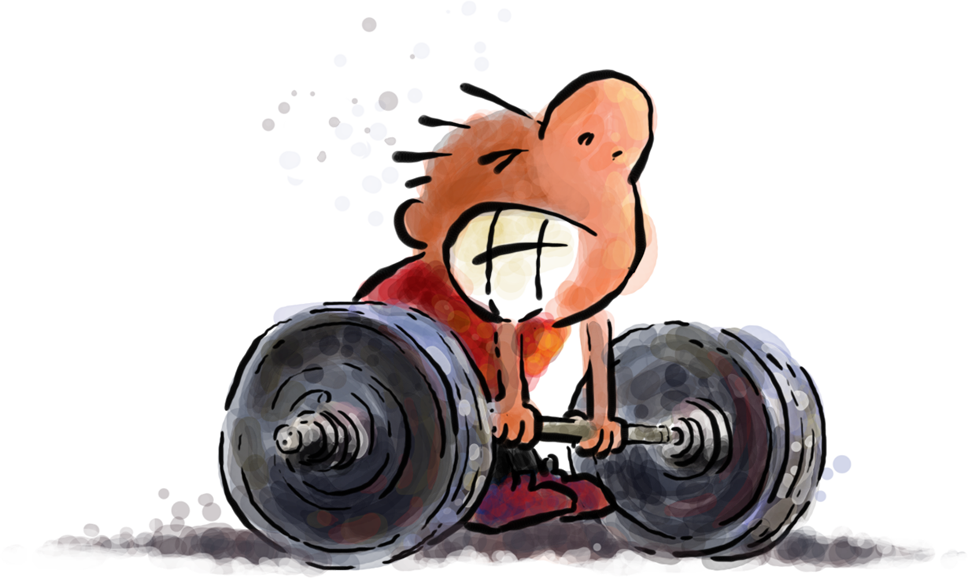
Ever wonder why it’s so hard to learn new skills?
Why is it that learning new skills are so, um, difficult? How do we acquire critical skills such as article writing, headline writing, sales letter writing? And why is it that no matter how many courses we attend, we don’t seem to get very good at these skills?
The answer lies in information overload. Most trainers love to teach. They love to give you and me all the information we need to improve our skills. It’s just that they give it to us at one go. Suddenly you’re trying to lift Olympic-sized weights just to learn a new skill.
As you’d expect, there’s another way It’s a method called “tiny increments”. And it’s just like it sounds. Instead of doing twenty squillion things, you do one tiny little thing today. Then you do a tiny little thing tomorrow—and so on.
Tiny increments allow you to make tiny mistakes
In reality the method of teaching is all wonky. When you’re overloaded with information, it’s hard to execute that information. So you take a stab at it, and sometimes you’re able to figure out how to do the task. At other times, you’re struggling to figure out where you went wrong.
And in the process, you don’t make small mistakes—you make some amazingly big mistakes. The gap between what needs to be done, and what you end up doing is so great that the skill seems beyond your reach.
 If you feel like you’re going nowhere when trying to learn a skill, it’s because you’re getting way too much information all at once. When you get smaller chunks, it’s far easier to learn just about any skill.
If you feel like you’re going nowhere when trying to learn a skill, it’s because you’re getting way too much information all at once. When you get smaller chunks, it’s far easier to learn just about any skill. 
Presenting Psychotactics Courses
Psychotactics courses are designed with just one purpose in mind: To get each and every client to the other side. This means that if you join the cartooning course, you will become a cartoonist by the end of the course. If you choose to learn how to write headlines, you’ll not only write great headlines, but know exactly what’s wrong with someone else’s headlines—and be able to fix them.
In short, a client must achieve their goals to their complete satisfaction.
But how would we know the clients are satisfied? There’s only one benchmark for satisfaction—and that is a client who comes back repeatedly. Even though the Psychotactics courses are among the most expensive courses on the Internet, clients come back twice, thrice—some clients have done over five courses.
Because, when you think about it: Why do you do a course in the first place? It’s to gain fluency of the topic, isn’t it? And Psychotactics courses are designed to move slowly, but get extremely astounding results.
Why Clients Choose Psychotactics

If you feel like you’re going nowhere when trying to learn a skill, it’s because you’re getting way too much information all at once. When you get smaller chunks, it’s far easier to learn just about any skill.
Alison Beere, Cape Town, South Africa
 Sean is one of the best teachers I have ever had, and I went to a prestigious college in the United States. He teaches you a system, but more importantly he explains why each step is important. Having him there every day to instruct you is very effective.
Sean is one of the best teachers I have ever had, and I went to a prestigious college in the United States. He teaches you a system, but more importantly he explains why each step is important. Having him there every day to instruct you is very effective.
Marcus Stout, Washington, D.C, USA
 I teach for a living, so I can tell you—Sean works for his money. He knows his stuff. His courses are exceptionally well-designed. And he’s generous with his time, expertise, and everything else. Ask a question and you will get a personal answer. Keep asking and keep getting answers. Good answers. Wow.
I teach for a living, so I can tell you—Sean works for his money. He knows his stuff. His courses are exceptionally well-designed. And he’s generous with his time, expertise, and everything else. Ask a question and you will get a personal answer. Keep asking and keep getting answers. Good answers. Wow.
Alia Thabit, USA
Where Do I Start?
Have a look at this page to find out about all courses—Psychotactics Courses Details.

